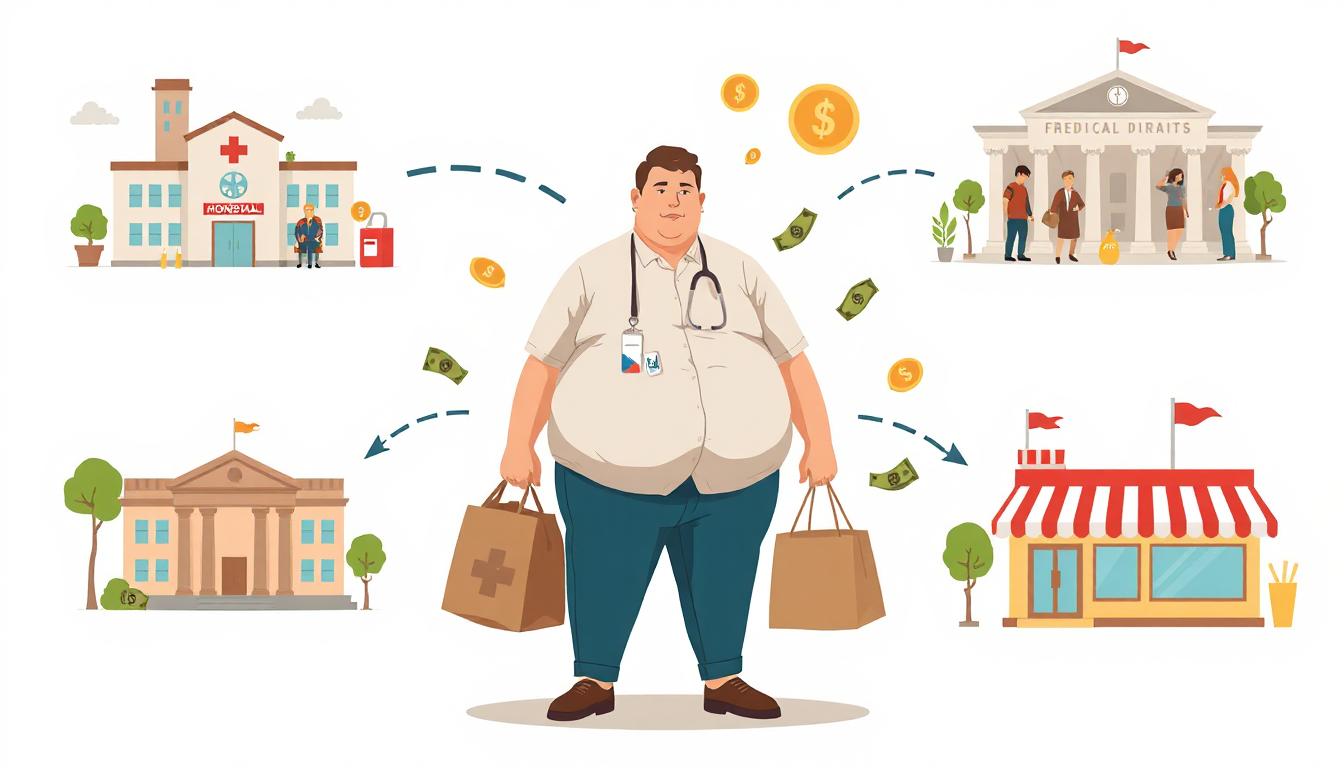Obesity has become an alarming public health concern, affecting individuals across all age groups and socioeconomic backgrounds. However, it is not just a matter of personal health; the economic ramifications of obesity extend far beyond medical expenses. The increasing prevalence of obesity impacts healthcare systems, workforce productivity, businesses, government spending, and the food industry. Addressing this epidemic is crucial not only for improving individual well-being but also for alleviating the economic burden it imposes on society.
The Rising Trend of Obesity
Over the past few decades, obesity rates have surged significantly. According to the Centers for Disease Control and Prevention (CDC), more than 42% of American adults are classified as obese, with a body mass index (BMI) of 30 or higher. Alarmingly, nearly 20% of children and adolescents in the U.S. are also affected by obesity, predisposing them to chronic illnesses at an early age.
Several factors contribute to the obesity epidemic, including sedentary lifestyles, poor dietary choices, and genetic predispositions. The widespread availability of processed foods high in sugar, unhealthy fats, and calories further exacerbates the problem. In addition, economic disparities play a role, as lower-income communities often lack access to fresh, nutritious foods and safe spaces for physical activity.
Promoting healthier lifestyle choices through education, public awareness campaigns, and behavioral interventions can help combat obesity. Individuals can take proactive steps such as consuming balanced diets, engaging in regular physical activity, and seeking professional healthcare guidance. Mental and emotional well-being also play a role, as stress, depression, and anxiety can contribute to weight gain. Managing stress through exercise, meditation, or social support can aid in maintaining a healthy weight and overall well-being.
Healthcare Costs Associated with Obesity
Obesity is a major driver of escalating healthcare costs. Individuals with obesity are at a higher risk of developing chronic diseases such as type 2 diabetes, cardiovascular diseases, hypertension, and certain cancers. Managing these conditions requires frequent doctor visits, expensive medications, and hospitalizations, all of which place a substantial financial burden on the healthcare system.
According to healthcare studies, obesity-related medical expenses in the U.S. amount to hundreds of billions of dollars annually. Both public and private healthcare systems bear the cost of treating obesity-related conditions, leading to increased insurance premiums for all individuals. Moreover, taxpayers indirectly fund government-sponsored healthcare programs, such as Medicaid and Medicare, which cover obesity-related medical treatments.
Preventive measures, including early intervention programs and lifestyle modification initiatives, can significantly reduce healthcare expenditures. By investing in obesity prevention strategies, the financial strain on the healthcare system can be mitigated, benefiting individuals and society as a whole.
Impact on Workforce Productivity
The economic repercussions of obesity are also evident in the workplace. Obesity-related health issues contribute to increased absenteeism, as individuals dealing with obesity and its associated conditions require more sick leave. Additionally, presenteeism—a phenomenon where employees are physically present at work but unable to perform efficiently due to health issues—leads to decreased productivity and overall work quality.
Employers face increased healthcare costs, reduced workforce efficiency, and higher turnover rates due to obesity-related health complications. Implementing workplace wellness programs can help address these challenges. Companies that encourage physical activity, provide healthier food options, and support employees’ weight management efforts can see improvements in productivity and overall employee well-being.
Economic Burden on Businesses
Beyond healthcare and workforce productivity, businesses bear direct economic costs due to obesity. Higher insurance premiums, disability claims, and increased workers’ compensation costs are all linked to obesity-related health complications. Certain industries that require physical labor may experience greater workplace injuries among obese employees, adding further financial burdens to businesses.
To combat this issue, businesses can adopt policies that prioritize employee health. Initiatives such as subsidizing gym memberships, offering healthier food options in cafeterias, and providing educational resources on nutrition can foster a healthier workforce. Some companies even offer financial incentives to employees who achieve health milestones, promoting long-term commitment to weight management.
Government Spending on Obesity-Related Programs
Government expenditures on obesity-related programs continue to rise, as obesity places significant demands on public healthcare and welfare services. The U.S. government allocates billions of dollars annually to initiatives focused on obesity prevention, treatment, and public awareness.
Funding is directed toward various programs, including community-based health interventions, school nutrition initiatives, and research aimed at understanding obesity’s root causes. However, despite these efforts, the prevalence of obesity remains high, highlighting the need for more effective strategies. Policies that regulate food advertising, improve access to affordable healthy foods, and encourage physical activity at the community level can have long-lasting positive impacts.
Role of the Food and Beverage Industry
The food and beverage industry plays a crucial role in shaping dietary habits and, consequently, obesity rates. Many food manufacturers and fast-food chains prioritize profit over public health, aggressively marketing processed foods that are high in sugars, unhealthy fats, and sodium. The affordability and convenience of such foods make them attractive choices for many consumers, particularly those with lower incomes.
However, the industry also has the potential to be a part of the solution. By reformulating products to contain healthier ingredients, providing transparent labeling, and reducing the marketing of unhealthy foods—especially to children—food companies can contribute to obesity prevention. Consumers, in turn, can support these efforts by making informed choices and advocating for healthier food options in their communities.
Strategies for Addressing the Economic Impact of Obesity
Addressing the economic burden of obesity requires a multifaceted approach involving individuals, businesses, policymakers, and the healthcare system. Some effective strategies include:
- Public Education and Awareness – Increasing knowledge about healthy eating, the benefits of physical activity, and the risks associated with obesity can empower individuals to make healthier choices.
- Workplace Wellness Programs – Encouraging employee well-being through fitness incentives, healthier meal options, and stress management programs can reduce absenteeism and increase productivity.
- Policy Reforms – Implementing regulations such as sugar taxes, stricter food labeling laws, and improved school nutrition policies can help control obesity rates.
- Community-Based Interventions – Making fresh and nutritious foods more accessible in underserved areas and creating safe recreational spaces for physical activity can foster healthier communities.
- Healthcare Integration – Encouraging healthcare providers to focus on preventive care and early intervention can reduce long-term medical expenses associated with obesity.
Conclusion
Obesity is more than a personal health issue; it is an economic crisis that affects healthcare systems, businesses, and government budgets. Addressing obesity through preventive measures, education, workplace initiatives, and policy changes can help reduce its economic burden. By fostering a culture of health and wellness, society can alleviate the financial and societal costs of obesity while promoting healthier, more productive lives for individuals and communities alike.


